ASUS ROG Strix GeForce RTX 2080 TI Advanced Gaming Graphics Card (ROG-STRIX-RTX2080TI-A11G)
ASUS ROG Strix GeForce RTX 2080 TI Advanced Gaming Graphics Card (ROG-STRIX-RTX2080TI-A11G)

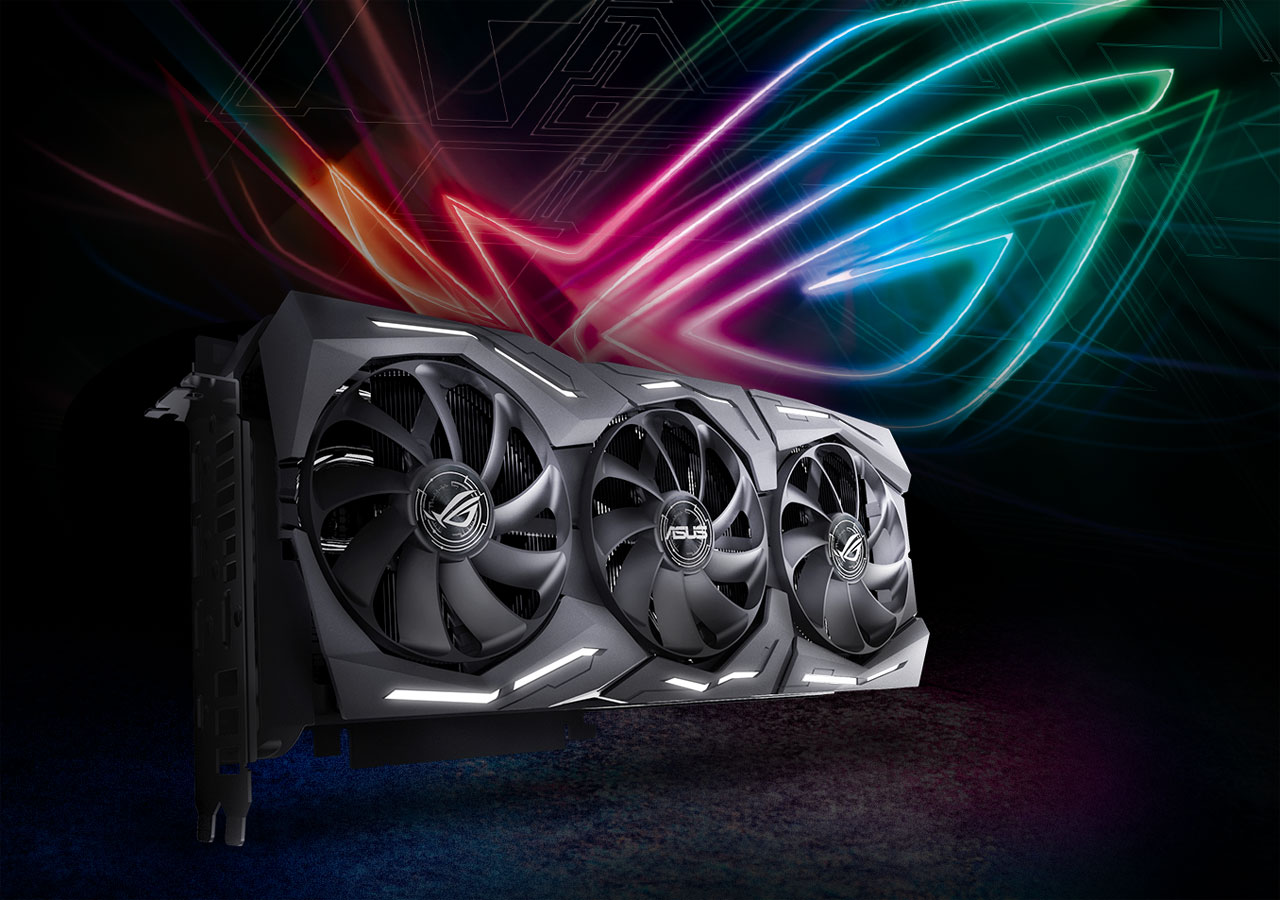
ROG Strix GeForce RTX 2080 Ti Advanced Edition
Outshine the Competition
The NVIDIA's newest flagship graphics card, the GeForce RTX 2080 is based on the ground-breaking Turning architecture that was built using 12nm FinFET—a new generation of graphics chip engineered for a new level of realism. This graphics card series incorporates brand-new, industry-changing, real-time Ray Tracing, AI and shading technology to transform gaming visuals with lifelike reflections, refractions and shadows. Meanwhile, Deep Learning Super Sampling enables much smoother frame rates and less burden on the GPU than previous-generation anti-aliasing technology. The GeForce RTX 2080 Ti card packs 4,352 CUDA Cores, and 11 GB of GDDR6/352-bit memory with 14 Gbps reference memory frequency.
This ROG Strix GeForce RTX 2080Ti model teams up NVIDIA's A-list GPU with an elite cast of specialists, setting the stage for epic gaming action. Gargantuan power delivery provides the muscle to push overclocking boundaries, while cooling that's honed to perfection keeps the spotlight squarely on Turing's performance. And with an arsenal of utilities that allow you to customize and tweak this extreme hardware, you call the shots.
NVIDIA TURING: ROG GeForce RTX graphics cards are powered by the Turing GPU architecture and the all-new RTX platform. This gives you up to 6X the performance of previous-generation graphics cards and brings the power of real-time ray tracing and AI to games.
DirectX 12: Power new visual effects and rendering techniques for more lifelike gaming.
4K: Step up to the ultimate 4K gaming experience with GeForce RTX and enjoy today’s biggest games in amazing detail.
Axial-tech Fans feature an all-around better design and IP5X dust resistance.
2.7-Slot Design expands cooling surface area by over 20% compared to last gen.
MaxContact Technology allows 2X more contact with the GPU chip for improved thermal transfer.
Auto-Extreme Technology uses automation to enhance reliability.
Super Alloy Power II includes premium alloy chokes, solid polymer capacitors, and an array of high-current power stages to fuel Turing’s cores.
ASUS FanConnect II equips 2 hybrid-controlled fan headers for optimal system cooling.
GPU Tweak II provides intuitive performance tweaking and thermal controls.
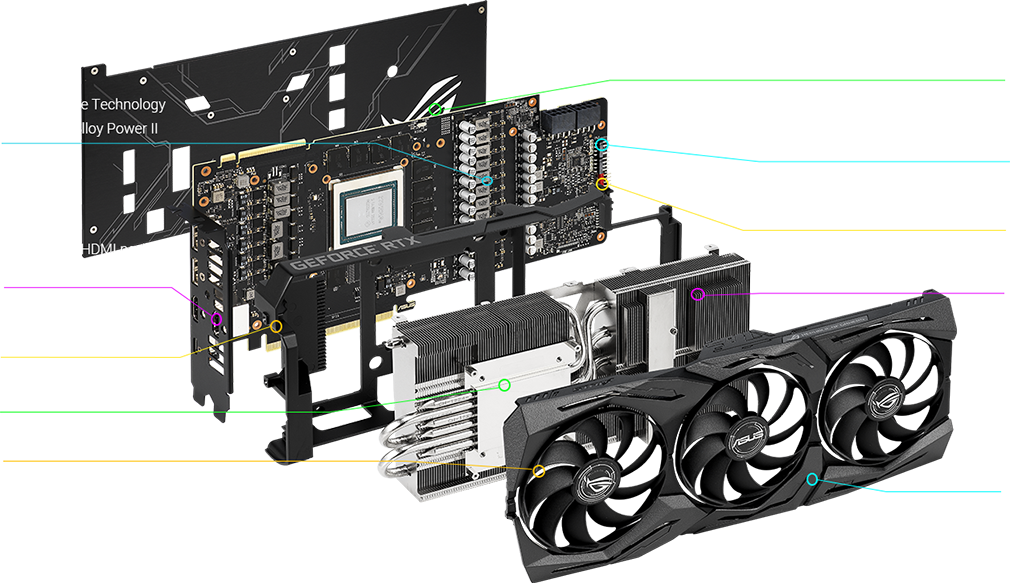

COOLING
Axial-tech Fans
Better, Faster, Stronger
To keep Turing's temperatures under tight control, we've brought a larger cooler to the table, which necessitates a more powerful and efficient fan that must maintain a whisper-quiet acoustic profile. Axial-tech meets these three design challenges by implementing our latest innovations for fan performance. We've reduced the size of the fan's hub to allow for longer blades and added a barrier ring that increases structural integrity and downward air pressure through the ROG Strix GeForce RTX 2080Ti's heatsink array. And we've also implemented IP5X dust resistance to seal the fan's internals from particle ingress to keeps things running smoothly. The new design allows Axial-tech fans to shift more air and spin at higher speeds without increasing noise levels.
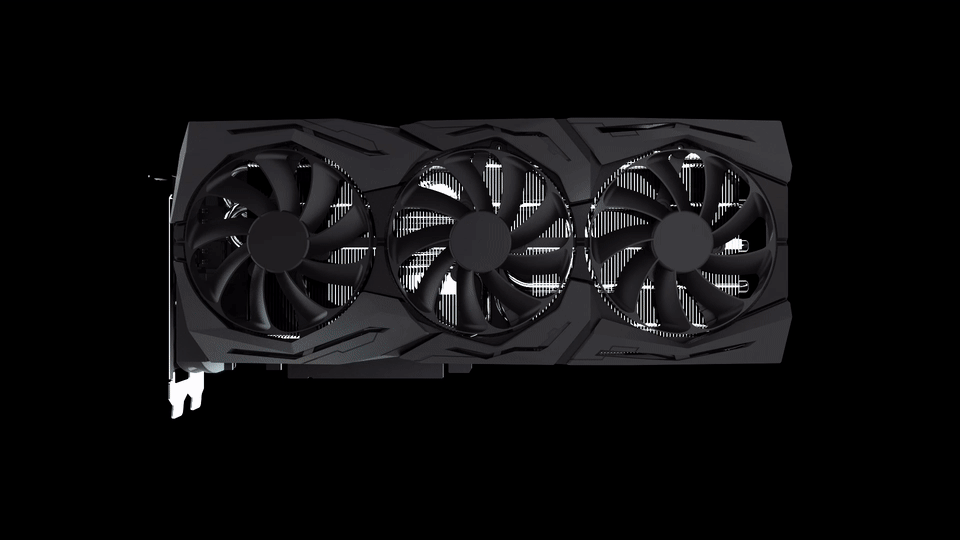
0dB Technology
Quiet intelligence
0dB technology allows fans to stop spinning when the GPU core temperature remains below 55 Celsius, letting you enjoy light gaming in complete silence. If temps rise, the fans automatically start up again.
* To activate 0dB mode, please engage Quiet (Q) bios mode by using the onboard switch.
2.7-Slot Design
Sink your heat into this
This generation, our top-end cards adopt a 2.7-slot footprint to accommodate a larger heatsink because bigger is better. We've increased the overall surface area of our cooling array by over 20% compared to last gen. If you want to squeeze the most out of the ROG Strix GeForce RTX 2080Ti's performance, our latest design gives you a lot more thermal headroom for overclocking. If you're just looking for an amazing plug-and-play experience, the extra heat dissipation keeps your fans running at lower speeds while you game.
MaxContact Technology
Precision-machined heat spreader
MaxContact is an industry-first technology that utilizes precision machining to create a heat spreader surface that makes up to 2X more contact with the GPU chip, resulting in improved thermal transfer.

ENGINEERING
Auto-Extreme Technology
Precision Automated Manufacturing
All ROG Strix graphics cards are produced using Auto-Extreme Technology, an automated manufacturing process that sets new standards in the industry. Traditionally, soldering of through-hole and surface-mounted components needs to be performed in separate stages. Auto-Extreme Technology allows all soldering to be completed in a single pass, reducing thermal strain on components and avoiding the use of harsh cleaning chemicals. The end result is less environmental impact, lower manufacturing power consumption, and a more reliable product.
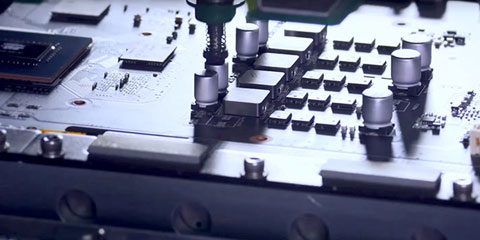
Our robots don't make mistakes, removing human fallibility from the equation

Fortified components offer better stability when overclocking

Automation allows for tighter quality control
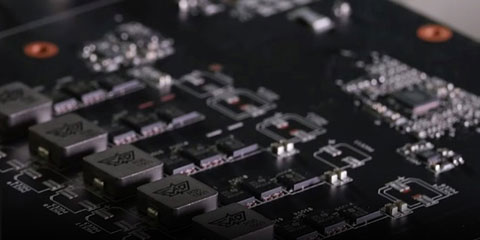
Soldering done in a single pass
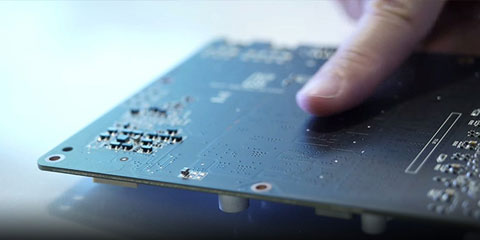
Our circuit boards are smooth, so you won't cut yourself when handling the cards

Flux-free production is an environmentally friendly change
Reinforced Frame
Architecture FTW
Our engineers have boosted the ROG Strix GeForce RTX 2080's structural integrity by 3X with a metal brace that prevents excessive torsion and lateral bending of the PCB.

SOFTWARE
GPU Tweak II
Monitor, tweak, and tune
The ASUS GPU Tweak II utility takes graphics card tuning to the next level. It allows you to tweak critical parameters including GPU core clocks, memory frequency, voltage settings, and more, with the option to monitor everything in real-time through a customizable on-screen display. Advanced fan control is also included along with many more features to help you get the most out of your graphics card.
XSplit Gamecaster
Premium streaming
XSplit offers a premium streaming experience with in-game annotations and other advanced features. Enjoy a free license with the purchase of select ASUS graphics cards. See you online!
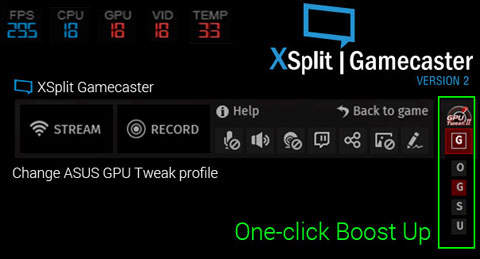
wtfast
Play lag-free
We've partnered with wtfast to help you to play free from lag, latency and lost packets. With a 6-month subscription to the wtfast Gamers Private Network, you'll enjoy lower ping for a smoother, more fluid online gaming experience. Buy an ASUS graphics card—and don't be left waiting!
Quantumcloud
Profit from GPU power
Quantumcloud is a simple and secure service that lets you effortlessly earn extra money by putting your idle GPU to work. Through an easy-to-use app, your computer can help run cloud-based applications, making you money in the process. Earnings are automatically transferred to your WeChat or PayPal account, and your privacy remains intact because Quantumcloud doesn't collect your personal data. Get started making money today!

EXPERIENCE
Aura Sync
Outshine the competition
The ROG Strix GeForce RTX 2080Ti features Aura RGB lighting on both the shroud and backplate. Get Aura Sync software to connect your compatible products for a completely customized gaming setup. You can sync to music, change color based on temperature, or select from a large number of patterns and static options, so make sure to look out for the Aura Sync logo when you're picking parts for your build.
Stealth Mode
Be a ninja
Sometime you just want to turn off all the lights… That's why we've outfitted the ROG Strix GeForce RTX 2080Ti with a convenient stealth mode button. Give it a press and you'll instantly transform from a master of the color-verse into a stealthy ninja.
Dual BIOS
Choose wisely
Do you prioritize low core temps or low noise levels? Performance mode will let the fans spin up to keep the card running cool all the time. Quiet mode keeps the same power target and top-end settings, but offers a less aggressive fan curve for quieter operation at medium temps. For even more customization and control, check out our GPU Tweak II software.
ASUS FanConnect II
Smarter fan speed
ASUS FanConnect II features two 4-pin, hybrid-controlled headers that can be connected to both PWM and DC system fans for optimal system cooling. Connected fans react to GPU and CPU temperatures, so that your system is optimally cooled no matter what you do. A comprehensive set of tuning options allow you to tweak fan speeds for your preferred balance of cooling and acoustics.
Virtual Reality
See me now?
By combining advanced VR rendering, real-time ray tracing, and AI, the ROG Strix GeForce RTX 2080Ti will take VR to a new level of realism. Cable management is much improved with VirtualLink, which utilizes an Alternate Mode of USB Type-C to provide a quick, single-cable connection for next-generation VR headsets.
NVIDIA G-SYNC Technology
Smooth operator
The ROG Strix GeForce RTX 2080Ti features NVIDIA G-SYNC display technology for the smoothest and fastest gaming imaginable, eliminating screen tearing and minimizing display stutter and input lag. Enjoy the latest first-person shooters, sports and action-adventure games at super-fast frame rates, even at the highest graphics settings!
 so recently we did a review about SLI with our MSI gaming extra cards 220 atti sli cards with custom PCBs and an air conditioning hooked up to it and we took three world records while we wait for the real overclockers to get there Ln two setups and their cards up and running but we're gonna go ahead and show what us regular guys are able to get our hands on and how far our custom PCBs can actually go we did that with MSI now we're gonna take a look at the asus
so recently we did a review about SLI with our MSI gaming extra cards 220 atti sli cards with custom PCBs and an air conditioning hooked up to it and we took three world records while we wait for the real overclockers to get there Ln two setups and their cards up and running but we're gonna go ahead and show what us regular guys are able to get our hands on and how far our custom PCBs can actually go we did that with MSI now we're gonna take a look at the asus strix cards a very popular brand that very that most people are familiar with it's ready to see what the thermals are like with the overclocking is like the acoustics and of course see what kind of single card scores we get so with that let's unbox it not this one though this one didn't come in a box that one did it's we're an open now I'm very passionate about and have been using for several years now VPN stands for
virtual private network it keeps your data online encrypted and secure now you wouldn't send an important package like this our TX graphics card in a clear box would you heck no because it's guaranteed to not make it where you want it to go or at least everyone's gonna know what it is on the way the same can be said for your data an order VPN not only works on your desktop browsers and of course your desktop but they also have mobile apps to keep your devices like
your phones in your tablet secure while you are on the go north VPN has thousands of servers in over 61 different countries meaning regardless of where you are you can start taking your internet security seriously today and you can save 66% off a two-year membership by heading to Nord BPM comm / JS 2 sets and using J's 2 cents offer code at checkout or you can just click the link in the description below I like that I appreciate this box though because it's a more
standard sized box for some of the other guys have come out with like the biggest boxes they could I think for that shelf presence when you're in Micro Center looking around you're like God that one's big that one got my attention that's what she said so here's what you get right here nice soft foam and installation saw your driver's and stuff right here right a CD why guys come on thumb drives are cheap enough just don't even include anything velcro strap card
nothing under the card okay so no support bracket or anything like that which the previous Strix models came with so I guess we won't be testing sag though because we're using my open air test bench on this alright so here it is the Strix 2080 ti with its nice brushed back plates there we go that has been handled now it is a dual BIOS card but the only thing that really changes with the BIOS which is the fan curve it doesn't change things like the power limit it doesn't
increase the power limit it doesn't increase the voltage it's just a fan curve thing which I guess makes it kind of nice if for some reason you had to reflash the BIOS or something corrupt so you have another BIOS ready to go but I've never really had that happen before I've only had BIOS corrupt because I corrupted them by trying to flash them with something custom but that's besides the point we had this new button right here this is a power led on/off button so
you can long press that to turn the lights on or off quickly without having to load up I guess your your Asus tweak software which is kind of interesting because I mean most people have a case it's not like you can just reach in and turn it on and off you take your side panel off so we've got three fans just like the previous Strix card these are high static pressure fans though you can see how it's not just blades it actually has a ring around the outside of the blades that
connect all of the blades so the air can't splash off the side it gets forced through the blade down through the fan into the heatsink now you can see that the heatsink runs the full length of the card the only gap we have right here is in the middle fan we can see where the heat pipes actually are other than that that there is a very major use of thinner II that's we're gonna dip we're gonna have it thinner it's called thinner II but I can see we got one two three four five vapor chamber heat pipes in this they also stuck with the stock dual eight pin PCI Express
power connector where you can work are we looked at the MSI trio had two eight pins and a six pin so I'm curious to see what this does in terms of power draw on what the power limit is on this because it does look like we're sticking with the stock at least current on this in typical Strix fashion we also have an RGB header on the back okay this is really interesting actually so this is a twenty eighty and I think this might be an engineering sample like I said didn't come
with a box or anything the twenty eighty as you can see has the RGB header and two fan headers that way you could actually connect things like your intake fans on your case or something to the card that way when the card would ramp up and pull more you know fan rpm it would also increase your case fans who supply as much air to the card as it needs interestingly enough though the twenty atti does not have that you can actually see where they
would be but they're blank so that's really curious I wonder why they did that and I will say that the twenty eighty is also running a dual eight pin and not the eight pin and six pin so yeah okay so as you can see with the heatsink though it's very thick this is a two and a half maybe a two point seven five slot card this is the power delivery or the vrm so you can see there are heat pads on that connecting it directly to the fin stack I don't think there's a heat pipe going
through there not that I can see and of course you can see that all of your RAM chips are touching the cooler as well and obviously the die itself so it's going to get this on the test bench and see exactly what kind of results we get with this I'm curious to see if we can't go higher than around the 2100 mark which seems to be kind of a hard wall for many cards at least maintaining that core speed because as we showed in our original founders edition review
power limit has been the limit on how far these cards can go , so the Strix card now has been running for 15 minutes or so yes it is in an open-air test bench once again I say this in every video we test open air that way we know what the coolers limits are not what the case is interfering with so your results will vary now we are running the P mode or the performance mode on the bios which which is just a little bit more aggressive fan curve because it's an
overclocking card we also are running on OC mode in ASA software which is the OC tweak too so yeah I also want to show if this LED button does right here so you see how the LEDs are just sort of glowing red because that's their color I guess if you hold it you can see that the lights turn off and then if you push it again the lights turn back on I mean it's a neat thing but are you gonna take your site side panel off every time you want to push that no probably not
alright so let's see where our temperatures are stuff have balanced out now we're using 1440p max settings on heaven because although this is an older benchmark heaven still puts a lot of heat into the system we use it to test our temperatures and I've also found that heaven is some of the most at least personally for me heaven has been some of the most picky when it comes to overclocks looks like we've been sitting and bouncing around the 1860 to 1845 range right now
it's at 1890 so that's kind of a high and low we did wrap all the way up to nineteen hundred and eighty when it first started but of course that's when the temperatures were nice and cool now because we're an OC mode the Strix has automatically a plus 10 on the power limit so it's actually at plus 110 now if we take a look to at our core GPU boost it only adds plus 15 and then the memory and stuff all stays the same so we're going to do right now is we are gonna go ahead
and max out this slider to 125 we're gonna hit apply on that and we're gonna see what happens to our core clock you can see immediately jumped up into the 19:20 19:30 it's at 1905 right now back up to 1920 and i'm gonna give it a little bit more fan speed too I think so the settings that kind of landed on is plus 155 on the core plus 0 on the voltage we know this is the slider is questionable at what it really does I mean they say voltage overhead but it didn't change at all
on my testing when I tested it plus 900 it says plus 1800s really plus 900 on the memory merits 900 times 2 because double data rate Asus just shows it in the actual effective frequency fans are at a hundred I didn't notice any power draw changes by dropping these so these fans are fairly efficient they're probably not pulling enough wattage to make any difference to the total TDP in this because this is like 330 watts I think when it's fully overclocked to the plus 125 or
plus 25 for a 125 power limit and are everything else is just kind of left external fans beat so this is where you would actually control the external fans if it had any it seems to think that there's fan headers on the card which don't actually exist so interesting you can see now we're sitting around 2040 2010 it's bouncing around it did spike 220 115 for a minute that's where it would go to if we weren't hitting power limit but unfortunately as you can see down here as is the our
TX 2080 standard we are just hitting the power wall before we ever hit our core limit so that's a little bit unfortunate and then our GPU temperature right now is sitting in the mid 50s 55 56 because the fans are at a hundred percent so we're gonna do right now is I'm gonna go ahead and compare this in 3d mark x by extreme so the 75 54 that was with my msi card and that beat my previous 7507 so that was what I was kind of comparing to with the Asus card but
unfortunately after several tests we just weren't able to get the core speeds as high so the first test was a 73-68 adjusted settings a little bit got it up to a 74 29 then the last test I ran we got is 74 47 and then past that we just kept crashing and crashing now this comes down obviously all the way to Silicon Lottery and this is performing much better than even the founders Edition card that we were given because that card was hitting power limits even sooner so let's go and
have some final thoughts about the Strix card all right so the Asus Strix is pretty much giving you what you would expect a card that is giving you better cooling better well not so much better acoustics to be honest the fans on this I found once around that 80% or above they sound very choppy it's the best way to describe it so the card is sitting here right now at its default fan curve and the noises you're actually hearing are like the vrm fans on the motherboard and the
radiator fans you can't actually hear the GPU but as soon as we turn the fans to a hundred percent you'll see what I'm talking about when I say they have a little bit of a choppiness to them instead of being a real consistent woosh it's kind of Oh at least that's what I hear whether the mic here is it I don't know so it goes one of those things where when it comes this is gonna be just like Pascal the card that you should buy quite honestly is going to depend on the
aesthetics these are all gonna probably perform very very close to each other because they're all gonna hit the same power limit and when someone does come out with one that just pushes that power limit to the extreme you're just gonna hit core limit right above where the power limit was that's been our experience so far anyway any crash that we've experienced on any of our r-tx cards has been specifically when it kind of kicks up to that high number for a split second
before power limit was a problem that's where the crash happened every single time but what I love about the Strix cards is area they are very minimalistic black IO shield right here black cooler black fans black everything black PCB allowing you to with the RGB included on the you know the lighting software and being addressable RGB in here you can set it to whatever color you want or just leave the modes that are on there past that guys tell me what you guys
thinks I mean Asus is a brand that has been around for a long time they've definitely set the bar high with their custom designs and this one is no exception although it didn't take the leaderboard for our studio here that's probably coming down just to Silicon lottery lottery but that just comes down to the silicon lottery so guys sound off in the comments below tell me what card you're interested in us taking a look at around here we've got a few more they're still
making their way in custom PCBs are still being designed by many of the AI bees and obviously we'll be taking a look at them as we always do every time there's a new graphics card so I'm gonna go guys thanks for watching this review of the very high level click review of the GeForce r-tx 2080 ti Strix from Asus and as always we will see you guys in the next one , allergies way to burn up tape you have much money it cost per minute to run production around here is just something about the way new electronics smell I don't care .
ASUS ROG Strix GeForce RTX 2080 TI Advanced Gaming Graphics Card (ROG-STRIX-RTX2080TI-A11G)
the r-tx 2006 feelings between that of ups and downs though this card right here the asus strix rog 2080 TI is definitely one of the uppers when it comes to this line of Turing graphics cards booting straight into the details over clocks this thing was a solid overclock and gaining about a hundred and forty mega Hertz on the core and memory close to that of two hundred megahertz this enabled as I'll put up on the graph here a max core clock of nineteen hundred and sixty five megahertz out of the box and when overclocked it hit an absolute mind-boggling 2115
megahertz on the core and the best thing was it still managed to do so whilst remaining relatively quiet though more on that later this enabled this card right here to pull anywhere from thirty to fifty percent ahead in the benchmarks as we'll see later when compared to that of the custom gigabyte r-tx twenty eighty overclock we have here and also the gtx ten ATT IOC that is also here in the tech yes studio so strap on in ladies and gentlemen because this one is
about to get hot pretty and downright ugly that weird analogy of course relates to the inner struggle between you and your wallet because make no doubt about it the twenty atti is an expensive car , the Asus 2080 TIR og Strix weighs in at about 1.4 7 kilograms is triple slot in my eyes though Asus officially call it 2.7 times it has RGB LED lighting on the rear sides and underneath of the card that is controllable via software and can connect to or a sync on
your motherboard and other components there are 380 mil axial fans that feature an all-round better design than previous models that are IP 5x dust resistant to something I'll test in due time with the data back of course Asus are also implementing Auto extreme technology which has to do with soldiering of the components on the card itself it's automated and it's all done in one pass heading to the fact that it would be more reliable product which will go the longer
distance it also in my opinion has one of the best aesthetics of any gravis card to date though of course how does it perform it both 1440p ultra wide and 4k might you ask well pulling up the first graph here for you guys far cry 5 1440p showing that there's a small boost at this ultra wide setting at this stage it was only taking the lead here by roughly 20% but 4k results were soon to show that this was more of a CPU limitation at 1440p ultra wide and honestly a cpu
limitation on a demanding title like far cry 5 on maximum settings at 21 by 9 1440p is no small feat might add I'm running these tests on a 78 20 X at 4.5 gigahertz - and ddr4 memory is running at 3200 megahertz moving on with scum the results showed anywhere near a 30 to 35 percent gain in 1440p ultra wide and then moving on to 4k showed a similar trend continuing though pub G was soon to show what the rog r-tx 28 ET i was really capable of gaining roughly a 40 to 50 percent boost over the other cards here I honestly had to go back and double-check
these numbers to make sure but sure enough 1440p and 4k showed some massive gains allowing the overclock on this graphics card itself to flex over even its default clocks moving on with destiny just a PG friendly benchmark of me playing some soccer at the farm and 1440p showed an average framerate pulling ahead by again roughly 45 to 51 percent compared to the 1080 a4k continued a similar trend managed to cap an impressive 52% overclocked first overclocks
though I could have received a golden sample here well maybe that's just a Zeus's claims of implementing the best style of air cooler in the biz are showing some truth there was pretty eye-opening to see how aggressive the results were when and looking at the overclocked numbers they're looking at our simulator twenty-eight ATP World of Warcraft benchmark this is over double the pixels of 4k by the way things came back down a bit here to reality and our
simulated results only showed a 24 to 27 percent increase over the 1080 Ti and the r-tx 2080 then around a 30 percent difference overclocked versus overclocked next up we had the infamous Crysis 3 and that question that didn't get answered in the RT X 2080 review if you haven't seen it I'll put it up here was can it run Crysis at 4k and we were honestly so close to that magical 4k 60fps number it was disheartening it got almost there 58 fps when it was
overclocked and we're using very high settings which is pretty much the max settings you can use with two times MSAA and here it's scored overclocked verse overclocked around about a 38 to 49% lead over the other two top dogs in the race and non OSI 30 and 40 percent over the 20 80 and 1080 Ti respectively though 1440p was roughly the same as 4k so the cpu limitations were not present in either benchmarks the Final Fantasy 15 benchmark they do say it does have DL SS enabled this netted some massive gains for the 2080 ti not just over that of the 1080 ti
interestingly enough but also its little brother the 2080 it was nearly a 33 and 36 percent gain overclocked versus overclocked first the boys and nonno seesaw at 27 and 30 percent increase respectively and moving on with some other simulated benchmarks and these are pretty important because unfortunately I don't have any other 20 atti cards here to compare the ROG card to so it's going to give you the viewer a rough estimate of how well this card can perform
at both stock and at overclocked settings and the overclocked settings indeed show nearly a 10% boost in performance over the stock settings which is massive especially on a flagship card but at all showed how well the card could pull ahead of both itself and the 1080 TI scoring about 48% more points and roughly 40% more than the r-tx 2080 from gigabyte though fire strikes showed a mere 23% increase over the 1080 TI and roughly 30% over the r TX 2080
guess it needs more magical eye candy for a really to pull ahead of course at this stage it is important to mention that I'm still yet to come into any real world applications that utilize tensor cause and ray tracing the star reflections demo is capped at 24 fps and it's just not really a good benchmark to get any really solid indicator of performance with these graphics cards especially since there's no gameplay involved in it though back to the Strix itself power
consumption was quite big both stock and overclocked coming in well ahead of that of both the 2080 and 1080 TI stock total system power consumption is up nearly 31 percent compared to that of the 2080 and 15% compared to the 1080 ti overclocking sees the consumption balloon out to 47% and 30% respectively of course with a lot more CUDA cores of 4352 then both the 2080s 2944 and 1080 is 3584 it is bound to use a bit more power it also features the faster GD
dr6 memory same as the 2080 and has 11 gigabytes of it versus 8 gigabytes on the 2080 and 11 gigabytes of gddr5 X on the 1080 Ti it also just like the 1080 TI features a mind-boggling 352 bit wide memory boss bigger than that of the 28 is 256 bit though fan speeds are noise this is where azusa's implementation of their cooler proved that the 20 80 TI rogue Strix showed they could easily keep the heat under control and the sweet spot here was 60% fan speeds in my
opinion though people who hate noise will be glad to see that I actually had to physically stop the CPU cooling fans to get an accurate reading of 39 dB when it was on auto so yes the temperatures went up to 75 degrees on auto but the noise was ridiculously low for a flagship card and the fans only spun up to 35% I mean it could just be that this Strix here is indeed the best Strix of them all the max call clocks as we mentioned before showed that this card pulled well ahead in the overclocking department so it seems azusa's claims to having the best
implementation of a cooler a coming to fruition beating that of gigabytes low power consuming twenty eighty by roughly five percent lastly finishing off on the features the card features a three year warranty as an additional button to turn RGB LED lighting off instantly and when this card is set to auto that's the out of the box settings it has a silent fan feature when the idle on the desktop the fans will just simply stop spinning it also has a fatter PCB at eleven and a
half centimeters at least compared to the standard design of the r-tx 2080 we have here it also has two eight pin connectors USB type-c at the back and two display ports and two HDMI 2.0 outs which I do prefer is a lot of people that I build pcs for do tell me they like having a HDMI for their basic monitor and one for VR so it fits the bill nicely it also has a clean back plate with the ROG I RGB shining through and finally there is a brace going through the side of the card
to help prevent GPU sag quite a nice idea since the card is very heavy and bulky so when it all comes down to what this card right here is a beast out of all the graphics cards I have tried in the past I like this thing the most only ever so slightly over the hall-of-fame design however I did really like that too but I'm honestly not liking the price tag it is very expensive for a gaming graphics card make no mistake I actually don't know the official MSRP in Australia but going
by previous years of ROG Strix cards will most likely command a slight premium over the reference MSRP at the moment in reviews founders card Oran oz 1899 is to slot has a massive amount of unnecessary metal on it that doesn't help to cool the card and doesn't look anywhere near as good as this card right here in my opinion so if it's anything to go by the premium is going to be easily worth it for basically a card that has had everything beefed up on it from the PCB to the vrm to the cooler which will enable you to overclock to higher levels of
performance or have extremely low levels of noise which on a flagship is dare I say highly desirable yes it's expensive and no you're not going to get the best frames per dollar but I can't help but actually like the 20 atti a lot more than the 20 80 especially as it actually gives us something new and that is higher performance over the existing flagship but if you are in the market for this card then you're going to know that you either want it or you don't and if you
are that person who wants a 20 80 TI and you want the best of the best then this is certainly going to deliver that and if premium is what you are prepared to pay then this thing will definitely give you a premium experience.
Learn more about the ASUS ROG-STRIX-RTX2080TI-A11G-GAMING
ModelBrandASUSSeriesROG StrixModelROG-STRIX-RTX2080TI-A11G-GAMING
InterfaceInterfacePCI Express 3.0
ChipsetChipset ManufacturerNVIDIAGPU SeriesNVIDIA GeForce RTX 20 SeriesGPUGeForce RTX 2080 TiCore Clock1350 MHzBoost ClockOC: 1590 MHz
Gaming: 1575 MHzCUDA Cores4352
MemoryEffective Memory Clock14000 MHzMemory Size11GBMemory Interface352-BitMemory TypeGDDR6
3D APIDirectXDirectX 12OpenGLOpenGL 4.5
PortsHDMI2 x HDMI 2.0bMulti-Monitor Support4DisplayPort2 x DisplayPort 1.4Other Ports1 x USB Type-C
DetailsMax Resolution7680 x 4320SLI SupportSLI ReadyVirtual Reality ReadyYesCoolerTriple FansThermal Design Power250WSystem RequirementsRecommended PSU: 650WPower Connector2 x 8-PinHDCP Ready2.2
FeaturesFeaturesNVIDIA TURING: ROG GeForce RTX graphics cards are powered by the Turing GPU architecture and the all-new RTX platform. This gives you up to 6X the performance of previous-generation graphics cards and brings the power of real-time ray tracing and AI to games.
DirectX 12: Power new visual effects and rendering techniques for more lifelike gaming.
4K: Step up to the ultimate 4K gaming experience with GeForce RTX and enjoy today's biggest games in amazing detail.
Axial-tech Fans feature an all-around better design and IP5X dust resistance.
2.7-Slot Design expands cooling surface area by over 20% compared to last gen.
MaxContact Technology allows 2X more contact with the GPU chip for improved thermal transfer.
Auto-Extreme Technology uses automation to enhance reliability.
Super Alloy Power II includes premium alloy chokes, solid polymer capacitors, and an array of high-current power stages to fuel Turing's cores.
ASUS FanConnect II equips 2 hybrid-controlled fan headers for optimal system cooling.
GPU Tweak II provides intuitive performance tweaking and thermal controls.
Form Factor & DimensionsMax GPU Length305 mmCard Dimensions (L x H)12.00" x 5.13"Slot Width2.7-slot
PackagingPackage ContentsAccessories:
1 x CD
1 x ROG Velcro Hook & Loop
1 x Quick Guide
ASUS ROG Strix GeForce RTX 2080 TI Advanced Gaming Graphics Card (ROG-STRIX-RTX2080TI-A11G)
To find out more from Amazon link below











Post a Comment